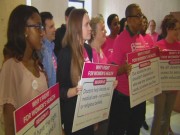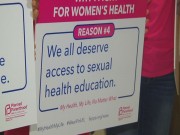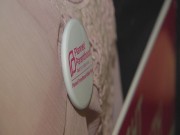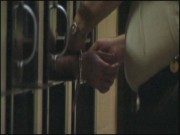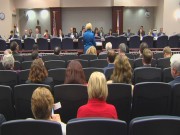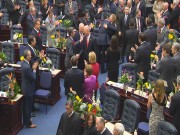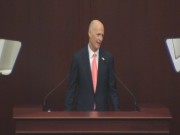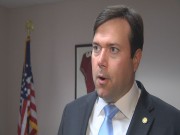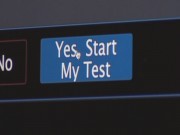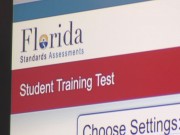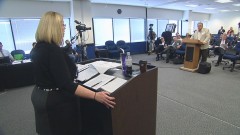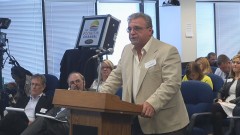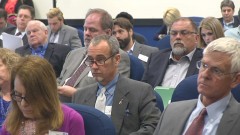Governor Rick Scott painted a picture of an improving economy during the annual State of the State address to open the legislative session, but Democrats and others say Scott is wearing rose colored glasses.
Governor Rick Scott entered the legislative chamber to modest applause that subsided before he reached the speakers platform. Once there he outlined a five point plan for improving Florida.
“Floridians can spend their money better than government can” says Scott.
Scott has proposed cutting cell phone and cable taxes saving average families just over 40 dollars a year. He wants to hold the line on graduate tuition.
Third, Scott wants to invest in job training.
“Fourth, we recommend a historic increase in K-12 funding to above the historic level” he comntinued.
His final point was a nod to three out of four voters who approved money for land conservation.
“The final thing we must do to outcompete the world is keep Florida beautiful.”
Never did Scott say precisely what he thought the state of the state was, so we asked Republican Representative Clay Ingram.
“We’re good, we’re on the way up” says the Pensacola Republican who was elected the same year as Scott.
While the Governor called for making dreams come true, Senate Democratic Leader Arthenia Joyner of Tampa and other Democrats say that can’t happen without adequate health insurance.
We begging. People are begging, Please expand Medicaid so I can be insured because one’s dream can’t come true if they aren’t healthy” says Joyner.0
And activists presented their own five point plan which included health care and better paying jobs. Rich Templin of the AFL-CIO took issue with the quality of jobs the Governor takes credit for creating,
“Why didn’t he point out that sixty percent of all those jobs created do not pay a living wage” says the labor activist.
One truism of 60 day legislative sessions is the few, even Governors, get everything they seek.
While the Governor is calling for tax cuts, it is local taxpayers who could see higher property tax bills to pay for education spending. Under the Governor’s plan increased cash from rising property values would pay for school increases, handcuffing local officials from lowering millage rates as values rise.
 Comments Off on Protecting A Woman’s Right
Comments Off on Protecting A Woman’s Right



